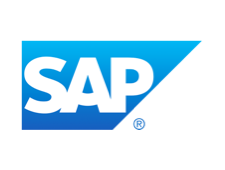SAP POS
Filter By
Browse By
- SAP Analytics and AI
- SAP Application Development and Integration
- All SAP Application Development and Integration
- SAP ABAP
- SAP ABAP Development Tools
- SAP ABAP Test Cockpit
- SAP API Management
- SAP BAPI
- SAP Basis
- SAP BRF
- SAP Business Application Studio
- SAP CMS
- SAP Design Studio
- SAP Development Tools
- SAP DevOps
- SAP EAI
- SAP EDI
- SAP Extension Suite
- SAP Fiori
- SAP Fiori Elements
- SAP Integration Suite
- SAP Low Code Application Development
- SAP Low Code Automation
- SAP Netweaver
- SAP Release Management
- SAP UI5
- SAP Web Application Server
- SAP Web IDE
- SAP Business Process Management
- SAP Center of Excellence
- SAP CIO
- SAP Customer Experience
- SAP Data and Data Management
- All SAP Data and Data Management
- SAP BW
- SAP BW/4HANA
- SAP Crystal Reports
- SAP Data Archiving
- SAP Data Center
- SAP Data Governance
- SAP Data Integration
- SAP Data Migration
- SAP Data Quality
- SAP Data Services
- SAP Data Strategy
- SAP Data Visualization
- SAP Data Warehouse Cloud
- SAP DMS
- SAP Document Control
- SAP EIM
- SAP ETL
- SAP ETL Tools
- SAP HANA
- SAP HANA Administration
- SAP HANA Deployment Infrastructure
- SAP HANA Studio
- SAP Master Data
- SAP Master Data Governance
- SAP MDM
- SAP Enterprise Architect
- SAP Enterprise Asset Management
- SAP ERP
- SAP Finance
- All SAP Finance
- SAP Accounting
- SAP AR AP
- SAP Asset Accounting
- SAP Billing Systems
- SAP BPC
- SAP BRIM
- SAP Cash Management
- SAP Central Finance
- SAP Controlling
- SAP COPA
- SAP Cost Center Accounting
- SAP Currency Risk
- SAP e-invoicing
- SAP FICO
- SAP Finance Automation
- SAP Advanced Financial Closing
- SAP Financial Consolidation
- SAP Financial Planning
- SAP FX Risk
- SAP General Ledger
- SAP Global Tax Management
- SAP Hyperion
- SAP Order to Cash
- SAP Payment Processing
- SAP Profitability Analysis
- SAP Rebate Management
- SAP S/4HANA Finance
- SAP SWIFT Compliance
- SAP Treasury Management
- SAP Universal Journal
- SAP Governance Risk and Compliance
- SAP Human Capital Management
- SAP Intelligent Technologies
- SAP Platform and Technology
- All SAP Platform and Technology
- SAP Business Technology Platform
- SAP Cloud
- SAP Cloud Connector
- SAP Cloud Integration Platform
- SAP Cloud Migration
- SAP Cloud Platform
- SAP Cloud Providers
- SAP Cloud Strategy
- SAP Digital Signature
- SAP Container Platform
- SAP HANA Enterprise Cloud
- SAP Digital Asset Management
- SAP Smart Forms
- SAP HEC
- SAP Digital Integration Hub
- SAP Hyperscalers
- SAP Infrastructure
- SAP Messaging
- SAP Quality and Testing
- SAP Security
- SAP Spend Management
- SAP Supply Chain Management
- All SAP Supply Chain Management
- SAP APO
- SAP Asset Management
- SAP Business Network
- SAP Digital Manufacturing Cloud
- SAP Digital Twin
- SAP EWM
- SAP IBP
- SAP Inventory Management
- SAP Label Printing
- SAP Logistics
- SAP Manufacturing
- SAP Manufacturing Automation
- SAP MES
- SAP MII
- SAP MM
- SAP MRO
- SAP MRP
- SAP Order Management
- SAP Plant Maintenance
- SAP PLM
- SAP Production Planning
- SAP S&OP
- SAP SD
- SAP SPM
- SAP Supply Chain Planning
- SAP Track and Trace
- SAP Transportation Management
- SAP System Administration
What Is Point of Sale?
Point of Sale (POS) represents the customer payment transaction for a brick and mortar or online retailer. As part of the POS, retailers rely on hardware and software to complete the transaction and process the payment.
POS: More than a Transaction
While the POS may appear simply as a transactional activity, it has implications for customer experience and profit for the retailer. Customers want and expect a checkout process that is quick, hassle-free, and easy to navigate.
What Is Point of Sale?
Point of Sale (POS) represents the customer payment transaction for a brick and mortar or online retailer. As part of the POS, retailers rely on hardware and software to complete the transaction and process the payment.
POS: More than a Transaction
While the POS may appear simply as a transactional activity, it has implications for customer experience and profit for the retailer. Customers want and expect a checkout process that is quick, hassle-free, and easy to navigate.
The POS is also critical for understanding customer preferences in terms of product selection and variety. Retailers gain valuable analytical insight into which products are selling, at what time of day, and in what quantity. This can provide better decision-making for the marketing and sales teams.
Lastly, integration between the POS, inventory management, and operational systems is critical for maintaining supply and demand balance and identifying potential revenue opportunities. Replenishment is essential for retailers to ensure the product is on the shelf where and when customers need it. Data from the POS should also be shared with suppliers to collaborate on product promotions and new product introductions.
SAP Customer Checkout Application
SAP’s point of sale solution is SAP Customer Checkout. According to SAP, the following are key POS capabilities of the application:
- Manage sales, returns, payments, coupons, and gift cards with a central POS system
- Access real-time reports, control sales and financial results, and extend and scale the application with flexibility
- Integrate with SAP S/4HANA or other ERP systems, or use as a stand-alone application
Key Consideration for SAPinsiders
- Case Study: AGRAVIS Transforms Its POS System for the Future. In this SAP case study, German agricultural trading company AGRAVIS needed to replace its legacy POS system to meet new cash register regulations and future POS transaction requirements. The company wanted a solution that integrated with its current software landscape, but also created a single source of truth of real-time sales and inventory data. AGRAVIS also required a solution that enabled capabilities for future omnichannel retailing. It chose the SAP Customer Checkout application with native SAP S/4HANA integration and linkage to existing legacy warehouse management systems.
A vendor in the point-of-sale space includes: Verbella.
365 results
-

 Premium
Premium
One Web Table Interface Class Fits All
Reading time: 39 mins
Implement a flexible custom table interface class for enhancing BW Web reports to meet new and changing business requirements. Key Concept The table interface is a gateway for modifying ABAP- based object-oriented classes for use with Web templates. You can use the table interface to modify the presentation of a Web template or specific data...…
-

 Premium
Premium
Improve Your G/L Postings by Enabling Substitution of Relevant Fields
Reading time: 9 mins
SAP limits the number of fields that you can use for substitution. If you want to use a field that SAP does not make available for substitution, you have to modify table GB01. Sometimes you can use transaction SE16 to make the modification, but more often you have to create a Z-program. An example shows...…
-

 Premium
Premium
Delivering Process- and Job-Aligned Training at Lower Cost with Solution Manager
Reading time: 13 mins
SAP solutions require a considerable amount of end-user training. Navigating through a large collection of training material can be daunting for a new SAP end user. By aligning the training to the business processes and to specific jobs, SAP Solution Manager Learning Maps can make accessing training more streamlined. Key Concept By using the Business...…
-
-

 Premium
Premium
Tips for Creating Objects Through Actions in Organizational Management
Reading time: 10 mins
Learn how to create various objects such as position, organizational unit, and job through actions in Organizational Management. Key Concept An action triggers a series of infotypes, one after the other, for data entry. Actions in Organizational Management (OM) are similar to personnel actions in Personnel Administration (PA). In PA, personnel actions create a new...…
-

 Premium
Premium
Revenue Recognition Configuration in SD Is a Key to Compliance
Reading time: 11 mins
To comply with the latest bookkeeping principles and current regulations, such as US-Generally Accepted Accounting Principles and the Sarbanes-Oxley Act, companies are required to post revenue according to a time period. This means that the revenues must be realized in the posting period in which the service was carried out or goods were actually delivered....…
-

 Premium
Premium
How to Build and Use Controls for Closed-Loop Planning Processes in SAP NetWeaver BI
Reading time: 18 mins
Learn how to build controls and create a number of unique roles in SAP NetWeaver BI or BW in the context of a consumer packaged goods business process. Key Concept SAP Business Planning and Simulation (BPS) allows you to use standard planning applications or build your own. BPS contains Web Interface Builder for building a...…
-

 Premium
Premium
Mass Changes with LSMW: An Easier Method for Complex Requirements
Reading time: 73 mins
SAP’s Legacy System Migration Workbench (LSMW) is a free tool that is often more useful than other options for performing mass changes within R/3. Using two examples from R/3 SD, the author shows a method that allows LSMW to directly access R/3 data so you can handle more complex requirements. In May 2004, I showed...…
-
-

 Premium
Premium
Build Payslip Messages That Conform to Your Business Requirements
Reading time: 9 mins
If you require more flexible communication with your employees than what infotype 0128 offers, then text modules and rules might better fit your needs. Customize this technique to meet your company’s requirements. Key Concept Text modules in HR Form Editor (transaction PE51) represent literal text on a payslip. Rules exert logical control over the appearance...…
-

 Premium
Premium
Ask The HR Expert: ABAP Custom Report Shows Employee’s Current and Past Positions
Reading time: 11 mins
One of HR Expert’s readers thinks that it would be useful to have a report showing an employee’s current and past positions, including salary and effective dates. Our HR expert agrees that there is a widespread need for such a report. In three steps, he explains how to create a concise, custom ABAP report that...…
-

 Premium
Premium
An Introduction to SAP Business Suite on HANA for ABAP Developers
Reading time: 9 mins
/HANANow that a majority of the core SAP Business Suite applications have been enhanced to run on SAP HANA technology, many ABAP developers are left wondering how this transition might affect them in the future. See how SAP HANA technology is integrated and used in systems using the SAP Business Suite. Key Concept Running the...…
Become a Member
Unlimited access to thousands of resources for SAP-specific expertise that can only be found here.
Become a Partner
Access exclusive SAP insights, expert marketing strategies, and high-value services including research reports, webinars, and buyers' guides, all designed to boost your campaign ROI by up to 50% within the SAP ecosystem.
Upcoming Events
Related Vendors
Your request has been successfully sent


